Metal crowns on teeth
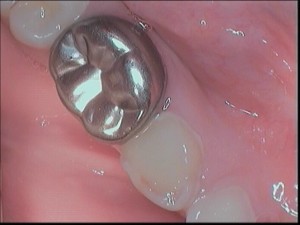
Metal crowns have been used for tooth restoration for decades.
And, despite the wide variety of designs at present, metal crowns on the teeth occupy an honorable place due to the presence of some advantages.
Today in the dental market there is a considerable selection of metals and alloys for the manufacture of dental crowns.
Alloys of gold, silver, palladium, chromocobalt, as well as steel coated with gold are popular.
Depending on the alloy, crowns can have different service lives.
Metal dental structures are used for prosthetics of chewing teeth, as they are able to withstand the load that they have to chew.
Metal dental crowns falling into the smile zone should not be set, of course.
For their prosthetics, it is better to use more modern aesthetic designs that will give the front teeth a more natural look.
Advantages
- Easy to install. To fix metal crowns, you do not need to sharpen your teeth.
- High structural strength.
- Lightweight and comfortable to use.
- Even strong tooth defects hide well.
- Restore the functionality of the teeth in full.
- Long term use. Metal crowns are highly resistant to wear and very rarely break.
disadvantages
- When using various alloys for prosthetics, galvanic reactions can occur, which are manifested by burning and the presence of a metallic taste in the mouth.
- Some patients may show an allergic reaction to the metal.
- The presence of metallic luster. Unaesthetic.
When install
Metal crowns are necessary in the following cases:
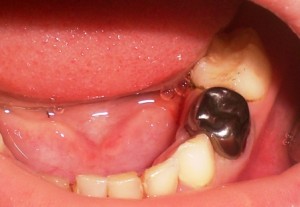
- In order to protect the tooth from further decay during caries or injury.
- In order to preserve a badly worn tooth.
- With almost complete destruction of the tooth restored by the filling.
- Metal crowns are often part of the bridge. They are used to maintain the bridge.
- Recommended for prosthetics of the chewing group of teeth.
- To hide defects if the tooth is deformed or discolored.
- When prosthetics on implants.
How to make
In order for the dentist to install a metal crown, you will need to visit him at least two times.
At the first visit, the doctor will prepare the tooth for prosthetics. In the second - install the design.
First visit to the doctor
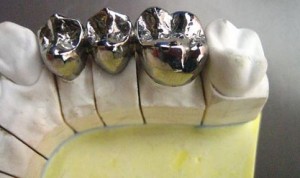
- The dentist will conduct an X-ray examination of the canals of the tooth and surrounding bone tissue. If there is inflammation or caries, tooth treatment is necessary.
- Before making a dental crown, it will be necessary to prepare the tooth (preparation).First, the dentist, if indicated, will remove the nerve.
- The next step is turning the tooth. If the tooth is live, then its grinding is performed under anesthesia. The degree of grinding of hard tooth tissues depends on the type of crown. When installing a metal crown, a minimal tooth turning is performed.
- Taking impressions and sending them to a dental laboratory, where a permanent dental crown will be made.
- Making and fixing on a turned tooth a temporary crown made of plastic.
Second visit to the dentist
- Fitting and fitting the manufactured structure.
- Fixing the crown on the tooth with cement.
Cost
The cost of crowns depends on the pricing policy of the dental clinic, its status, and the qualifications of specialists.
Since metal crowns can be made of various alloys, the price, respectively, will directly depend on the cost of the material.
The cost of metal crowns is within from 800 up to 18000 rubles.
Photo: before and after
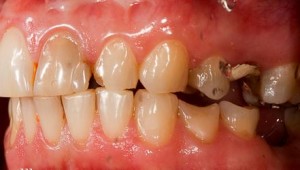 |
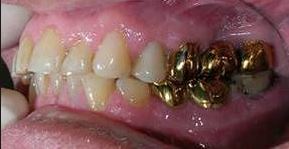 |
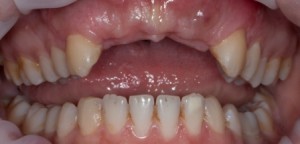 |
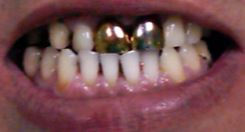 |
 |
 |